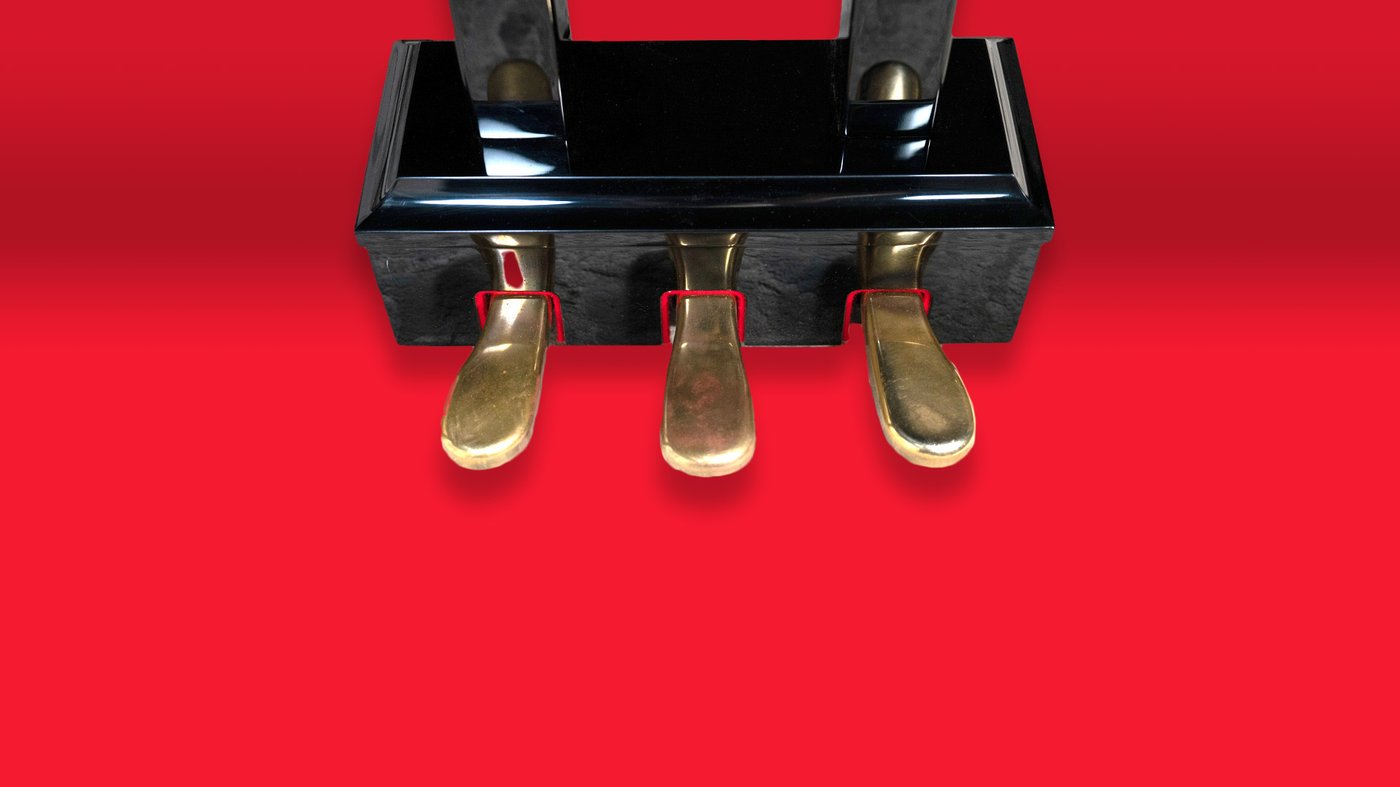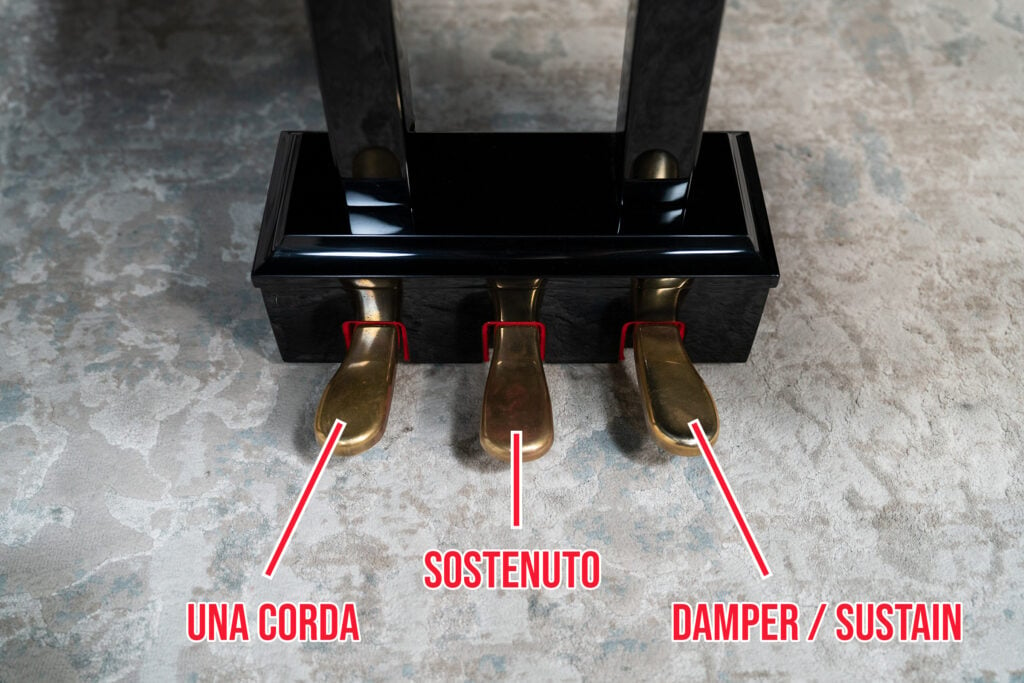
What do the pedals on a piano do? Pedals are foot controllers that alter the piano’s sound, allowing you to shape the character and tone of your playing and allowing more room for artistic expression. Pedals are powerful tools—tools you’ll definitely want to master as a pianist!
In this post, we’ll introduce you to the three standard grand piano pedals: the sustain, the sostenuto, and the una corda. We’ll also share some tips on how to use pedals effectively in your favorite songs.
Table of Contents:
Get exclusive interviews, fascinating articles, and inspiring lessons delivered straight to your inbox. Unsubscribe at any time.
The three pedals on a standard grand piano are, from right to left: the sustain pedal (also called the damper pedal), the sostenuto, and the una corda. (Upright pianos typically have a practice pedal in place of the middle sostenuto pedal.) The sustain and sostenuto pedals sustain sound by allowing strings to resonate freely. Meanwhile, the una corda changes the tone and volume of your playing.

To understand how the sustain pedal works, let’s review how strings on a piano work. When you press a piano key, you activate a felt part called a damper and lift it away from the key’s piano string. This allows the string to vibrate freely when a hammer hits it.
When you let off the piano key, the damper comes back down. This stops the string from vibrating, muting it.
So what happens when you press the damper pedal with your foot? When you pedal, all the dampers in the piano lift for as long as your foot is on the pedal. The piano’s strings can now resonate freely until they naturally stop. (Here’s an animated demonstration of how this works.)
The sustain pedal is popular in all styles of music and is responsible for the piano’s iconic rich sound. It can instantly level up your playing, so it’s definitely worth practicing damper pedal techniques!
Not to be confused with the sustain pedal, the middle pedal of a grand piano is called the sostenuto. You can think of the sostenuto pedal as a selective sustain pedal because it sustains a specific note or group of notes rather than the entire keyboard.
When you press a key and then press the sostenuto pedal, a bar inside the piano will “hook” the damper away from the key’s strings. As long as the sostenuto is depressed, that key’s strings will resonate.
Sostenuto pedaling is relatively rare. This technique is typically only found in later classical pieces of the modern era. Sometimes, the sostenuto is used to sustain a low bass note so that both hands can be used to play unsustained notes in the treble.
Did you know that most piano hammers (other than the lower bass notes) hit three strings, not just one?
“Una corda” means “one string.” Pressing the una corda pedal on a grand piano shifts the keyboard to the right, making keys hit one string instead of three. This creates a softer, muted tone that gives the piano a mellow charm. The una corda is especially popular in “impressionist” pieces like those by Debussy and Ravel.
The una corda works slightly differently on an upright piano. In an upright piano, the una corda causes the hammers to move closer to the strings so that they don’t strike the strings as hard.
In upright pianos, the middle pedal is often a practice pedal. This pedal causes a piece of cloth to slide between the hammers and the strings, muting sound and allowing students to practice late into the night without bothering neighbors and housemates.
Some pianos have a bass pedal that sustains only the bass keys.
Pedals can be an incredible tool for piano players, but it’s important to keep a few things in mind:

My rule of thumb when using the sustain pedal is to lift it each time there is a chord change or a change in harmony. If you don’t know how to tell if there has been a change in harmony, go with your instincts. Your ear will be able to tell you if your sound has become muddy and you need to release the pedal.
Lisa Witt, Coach and Content Director at Pianote
We hope this article helps answer the question, “What do the pedals on a piano do?” and inspires you to play and pedal! (Just don’t pedal too much 😉 )
Get real feedback from real experts…all from the comfort of your own home. Explore our Method and community for yourself with a free trial.
Charmaine Li is a Vancouver writer who has played piano for over 20 years. She holds an Associate diploma (ARCT) from the Royal Conservatory of Music and loves writing about the ways in which music—and music learning—affects the human experience. Charmaine manages The Note. Learn more about Charmaine here.


By signing up you’ll also receive our ongoing free lessons and special offers. Don’t worry, we value your privacy and you can unsubscribe at any time.
We use cookies for traffic data and advertising. Cookie Policy »